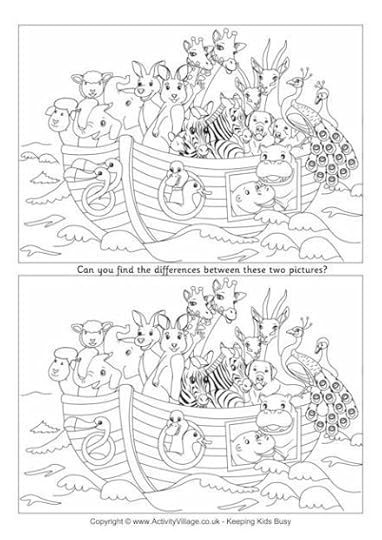Nate Fleming's Blog, page 43
April 17, 2014
The Upper Room Monologues • Part 1
This is the first part of a three part monologue cycle I wrote and performed during the Chengdu International Fellowship’s 2013 Easter celebration. The monologues each take the perspective of a different unnamed witness to the events of the Passion of the Christ, and they all take place in the upper room, where Jesus and his disciples celebrated Passover on the night he was betrayed.
The first part is the from the point of view of the owner of the upper room, which I am uploading on Good Friday. Part two will be uploaded on Saturday, and part three on Resurrection Sunday.
Be blessed!


April 15, 2014
Today’s Ragamuffin Quote from Rich
“There’s a line out of G. K. Chesterton where he says how we hate monotony because we’re not strong enough to exult in it. He says children kick their legs rhythmically out of an excess, not a lack of life. How do we know that all daisies are alike not because they have to be but because God never gets tired of making them? How do we know the sun doesn’t rise every morning because God says, ‘Do it again’? It might be due to the abundance of God’s life that the universe continues without variance. Then he says, we have sinned and grown old and our Father is younger than we.”
Rich Mullins


April 14, 2014
Thimblerig’s Ark
There was plenty of controversy connected with Darren Aronofsky’s Noah, but that ship has sailed.
Thimblerig’s Ark is still here!
Thimblerig’s Ark is a middle grade novel that tells the animal’s story of Noah’s Ark, and it’s actually been said that Christians will be offended by reading it. Of course, I found this to be ludicrous, but someone felt that way, so – whatever.
If you haven’t, head on over to Amazon and download Thimblerig’s Ark, and find out what I’m talking about!


April 10, 2014
Jeffrey Overstreet’s Commentary on Aronofsky’s Noah
As I’ve already mentioned, I have been thinking about writing a critique of the Christian response to Darren Aronofsky’s film, Noah. Because I’ve been consistently floored by the responses I’ve seen coming from different quarters about the film, I may still write it.
Meanwhile, writer Jeffrey Overstreet has written a very good commentary on the same subject, and hits some very important points:
First, why Aronofsky was a natural choice as a filmmaker to make the story of Noah:
The story of Noah and the ark is an Old Testament story, cherished by many religious traditions (not just Christianity). It’s about a man who goes to extremes, following God’s instruction in hopes of saving his family and the living things that God has created from the judgment that God promises to bring down upon the earth. When the great flood comes, Noah’s obedience is honored, and he and his family are saved.
But that’s not the end of the story. Things take a terrible turn. Noah becomes a darker, more complicated character, prone to drunkenness, and shaming himself before his family.
It sounded like just the subject for Darren Aronofsky.
Second, when the film arrived:
Some believers did indeed rejoice. They celebrated the film as a powerful interpretation.
Some didn’t rejoice. They were disappointed. The movie didn’t work for them.
Nevertheless, these two groups had civil discussions about the film. They argued respectfully about Aronofsky’s imaginative flourishes. They argued respectfully about his interpretation of the Bible story.
Third, regarding a third group that reacted angrily about the film:
Moreover, these angry people condemned moviegoers who disagreed with them. They said that any Christians who say they like Noah must be one or more of the following:
• They’re lying.
• They’re deceived.
• They’ve been paid off by the studios.
• They’re so embarrassed over being a Christian, so filled with self-loathing, that they’ll cheer for anyone who makes a mockery of the faith.
I would invite you to go read Overstreet’s analysis in it’s entirety, and wait for part two. It’s the continuation of an interesting conversation.


I’m So Angry About the Biblical Inaccuracies in Noah!
I’ve been doing a lot of thinking about the Noah film, and the livid reactions of so many Christians who are so upset that the film wasn’t more faithful to their interpretation of the Biblical story. I’m probably going to write about it, but for today, I’m just going to post this picture, and wonder if any Christians get upset by the way this picture strays from the Biblical story.


April 8, 2014
Looking for Readers in Repressive Countries
I just checked my stats page, and discovered that since I published the article, What’s Wrong with Christian Filmmaking, my blog has been read by people in nearly every country in the world, with close to 100,000 visits.
That’s insane.
I’ve not had visitors from Cuba, North Korea, Iran, Turkmenistan, Myanmar (Burma), Greenland, Madagascar, Mauritania, Yemen, Angola, Gabon, Syria, a few countries in the middle of the African continent, and a scattering of South Pacific Islands. But pretty much every other country is represented. That’s maybe 180 countries.
People from 180 countries have visited this blog in the past couple of weeks.
That’s even more insane.
What would really be insane is if by reading that article people in all of those places were encouraged to either (a) step out and take creative risks in their art for the cause of Christ or (b) be mobilizers, encouragers, and financial supporters to those people in group (a).
Can you imagine the impact such a creative revolution could have?
The really wild part of this is that I didn’t write anything particularly original, and I’ve had many people tell me that they had written similar things over the years. It was just an idea that went out at the right time and hit many, many nerves. But, I also believe strongly that nothing happens outside of God’s sovereign will, and that He “is able to do immeasurably more than all we ask or imagine, according to his power that is at work within us” (Ephesians 3:20) – even with a blog post written on an otherwise unknown and inconsequential blog by an otherwise unknown and inconsequential writer.
Think about it for a second… what will He do? What is He already doing?
At first I thought that perhaps God permitted this to happen so that I could sell hundreds of copies of my novel and jumpstart my writing career, but that hasn’t happened. Now I’ve started wondering what other reason He may have had for doing what He’s done. And even though the number of visitors to my blog has dropped off considerably since that first posting, I am curious to know four things from those who are still hanging around and who would be willing to share:
1) Are you an (a) person or a (b) person from above? Please tell me about it.
2) What have you been challenged to do that you weren’t doing before you read the blog? It could be artistic or supportive, and I’m asking you to self-promote a bit here, so fire away, and feel free to link to sites outside this blog.
3) Maybe nothing has changed yet, but what are you now planning to do differently in the near future as a result of reading the blog? What changes have you put into motion?
4) What steps have you taken to make sure that you don’t just walk away from the challenges that were set before you, and just return to business as usual?
I would love to have some good feedback with this. So if you have the time, please comment! And if nothing has changed for you at all, feel free to write about that as well.
Nate
Author of Thimblerig’s Ark


April 7, 2014
Tomb Sweeping Day on Mt. Qingcheng
Nothing says Tomb Sweeping Day like climbing a mountain. And it makes it better that this was the mountain that inspired the makers of Kung Fu Panda 2!























April 6, 2014
J.J. Abrams, Please Keep the Sex out of Star Wars
Dear J.J. Abrams,
Let me start by saying I’m a big fan of your work. I loved your Mission Impossible movies; got lost on the islands with the survivors as I watched Lost; sat on the edge of my seat as you ran us around New York dodging monsters in Cloverfield; and thought you had a fantastic and original homage to Spielberg with Super 8.
And then there’s Star Trek.
 I know you got quite a bit of flack for your reboot of Star Trek, but I generally fall on the side of the assentors. To put my thoughts on your reboot into context, I’m not a die-hard Trek fan, but I have been to a convention and stood in line for Marina Sirtis’ autograph. I’ve read countless novels from the series, and have seen most episodes of every incarnation. I loved what you did with the reboot because you took an old property in danger of fading away into irrelevance and breathed new life into it. You and your writers figured out an ingenious way of wiping the board clean, creating a very Trekkian alternate timeline, and in the process you didn’t destroy everything that came before. You made Trek cool again for a new generation.
I know you got quite a bit of flack for your reboot of Star Trek, but I generally fall on the side of the assentors. To put my thoughts on your reboot into context, I’m not a die-hard Trek fan, but I have been to a convention and stood in line for Marina Sirtis’ autograph. I’ve read countless novels from the series, and have seen most episodes of every incarnation. I loved what you did with the reboot because you took an old property in danger of fading away into irrelevance and breathed new life into it. You and your writers figured out an ingenious way of wiping the board clean, creating a very Trekkian alternate timeline, and in the process you didn’t destroy everything that came before. You made Trek cool again for a new generation.
I even liked the lens flares.
When the news came out that you would be taking the center chair for that other little space series, I was relieved. I’d read of your love of Star Wars, and since I’m only a couple of years younger than you, thought that we could have even watched A New Hope in the same theater. I feel like the property is in good hands, that you’ll do the series justice, and I wish you all the best with Star Wars, Episode 7.
And now, with Variety reporting that you have started filming, I have one huge heartfelt favor to ask – one Star Wars fan to another.
J.J. Abrams, please keep the sex out of Star Wars.
Let me go back to your Star Trek reboots to explain why I’m making this plea to you. I know that Captain Kirk is a stud, but could you really only communicate that by having him hop out of bed with a pair of Caitian girls in Into Darkness? (I had to look up their species – I’m not that big of a fan!) I know that sex sells, and Alice Eve is certainly attractive, but did we really need Carole Marcus modeling her underpants? Just how did that scene propel the story forward? And everyone knows that Orion slave girls are a desirable commodity in the Star Trek universe, but did we really have to have a shirtless James T. and his green-skinned classmate monkeying around in the dorm room in your first Trek film? What did that do to help us understand Kirk’s character arc that couldn’t have been done in a less TMZ way?
In case you are tempted to throw off my request as just another prude playing the part, I need to remind you that the Star Trek movies were at least partially aimed at kids. And while the argument can be made that Trek is the more adult series, I posit that the same argument cannot be made about Star Wars.
 Perhaps it is because George Lucas saw the huge profit potential of aiming his series at children, but Star Wars has always been about the kids in the audience, with adults enjoying being along for the ride. This is one reason why my generation – who loved the original trilogy – generally dislikes the prequels: the inclusion of Jar Jar Binks (who my kids LOVE, but I can’t stand); the less than stellar performances by key-demographic-hitting child actor Jake Lloyd (I blame Lucas’s hubris as a director for that); and the general emphasis given to special effects over story and character development. But Lucas made these films to entertain the entire family, not as films that push boundaries and create controversy, and he made them for primarily for the kids of the generation, not for the generations that came before and want the movies to scratch their own itches. The films have earned over $12,000,000,000 in toy sales, for heaven’s sake! And while I know plenty of 40 year old fans have their toy collections, my guess is that most of those toys were bought for kids.
Perhaps it is because George Lucas saw the huge profit potential of aiming his series at children, but Star Wars has always been about the kids in the audience, with adults enjoying being along for the ride. This is one reason why my generation – who loved the original trilogy – generally dislikes the prequels: the inclusion of Jar Jar Binks (who my kids LOVE, but I can’t stand); the less than stellar performances by key-demographic-hitting child actor Jake Lloyd (I blame Lucas’s hubris as a director for that); and the general emphasis given to special effects over story and character development. But Lucas made these films to entertain the entire family, not as films that push boundaries and create controversy, and he made them for primarily for the kids of the generation, not for the generations that came before and want the movies to scratch their own itches. The films have earned over $12,000,000,000 in toy sales, for heaven’s sake! And while I know plenty of 40 year old fans have their toy collections, my guess is that most of those toys were bought for kids.
Am I really the only film lover who has grown tired of directors taking movies that are hyper-marketed to kids and sexing them up for absolutely no reason whatsoever? The worst offender in this regard has to be Michael Bay and his muddled and confounding Transformer movies, with the masturbation jokes, robots with testes, and the long lingering shots of and .
But I digress. Let me leave behind the giant transforming alien robots and return to a galaxy far, far away.
Purists will undoubtedly bring up the infamous princess Leia metallic bikini in Return of the Jedi as a counterargument. Yes, it was bare skin on a Star Wars screen, but here’s the big difference: in this case Leia’s wardrobe pushed the story forward. Leia’s willingness to wear the bikini demonstrated that the character was willing to undergo abject humiliation – not for the rebellion, but to help save the man she loved.  It humanized an otherwise rather cold and difficult character. Given, I could be totally off base here. Maybe Lucas only added the bikini to titillate his largely teenage male audience, of which I was one. But even if that is the case, the choice made sense in the context of the story, and the character wasn’t simply objectified and sexualized. Leia maintained her strength and grace through the entire opening act of the film, in spite of the wardrobe. Thankfully, Lucas never showed us Han and Leia rolling around in whatever the Millennium Falcon used for a sack, and we never saw a buff Luke Skywalker tearing off his shirt to show off his jedi areolas while training with Yoda.
It humanized an otherwise rather cold and difficult character. Given, I could be totally off base here. Maybe Lucas only added the bikini to titillate his largely teenage male audience, of which I was one. But even if that is the case, the choice made sense in the context of the story, and the character wasn’t simply objectified and sexualized. Leia maintained her strength and grace through the entire opening act of the film, in spite of the wardrobe. Thankfully, Lucas never showed us Han and Leia rolling around in whatever the Millennium Falcon used for a sack, and we never saw a buff Luke Skywalker tearing off his shirt to show off his jedi areolas while training with Yoda.
So, Mr. Abrams, please avoid the temptation make Star Wars sexy to appeal to the older kids and adults trying to relive the past. Please respect that there are those of us of your generation, with families like yours, who want to take our families to watch Star Wars and and not have to explain why two of the characters are naked in bed together, or why they are stripping down to their underwear. Our kids are getting way too much exposure to too many things much too early as it is.
Please, Mr. Abrams, allow Star Wars to remain a safe haven!
And if that makes me a prude, then guess what? There are lots and lots and lots of other prudish parents out there who feel the same way. Guaranteed.
Sincerely,
Nate


April 4, 2014
Art is Art, the Pulpit is the Pulpit – Unpacked
“We need to recognize that art is art, the pulpit is the pulpit, and while the two might cross paths from time to time, they are completely different animals.” from What’s Wrong with Christian Filmmaking.
What makes a good sermon? To answer this question, take a look back to the 1700′s at Reformed preacher Jonathan Edwards, whose preaching helped spark the Great Awakening. As difficult as it is to believe, Edwards preaching was notably NOT entertaining, and yet thousands were impacted when he preached.
It was not due to theatrics. One observer wrote, “He scarcely gestured or even moved, and he made no attempt by the elegance of his style or the beauty of his pictures to gratify the taste and fascinate the imagination.” Instead he convinced “with overwhelming weight of argument and with such intenseness of feeling.
You see, a potentially powerful sermon preached needs to do one thing – communicate the message of the Gospel of Jesus Christ. If it does so in an artistic, entertaining, or dramatic manner, that is fine, but the point should never be to simply be artistic, entertaining, or dramatic. If you are a pastor trying to figure out the next best way to entertain your congregation, you are making a big mistake. If you are a youth minister and you are thinking that you need to entertain the kids in your youth group, then you will probably end up with entertained kids who will remain unsaved. If you aren’t basing your sermons on the word of God, you’ll find that you’re no better than Dr. Harrison Everett Breen of New York City.
Again – the Message can be delivered in an entertaining way, but entertainment should never be the point.
On the flip side, the primary point of good art should never be the message. I quoted Frank Capra in my original post, and this quote has also been attributed to Samuel Goldwyn, “If you want to send a message, try Western Union”. Think about this very carefully. The best “message” art is the art that doesn’t clearly communicate the message, but it forces the viewer to hunt for it.
I will give some examples from different artists.
Homeless Jesus by Timothy Schmalz.
Musically, I am a big fan of David Wilcox, a singer/songwriter who sings songs with very deep and contemplative messages, but you often have to search for the messages.
One of the most powerful “message” films I’ve seen is Shawshank Redemption. A wonderfully challenging film, difficult to watch in parts, with one of the most stirring soundtracks ever. And the film delivers impacting, layered messages. (Be forewarned: there are a couple of swear words in this clip.)
Hopefully, these examples demonstrate effectively that if you are an artist – Christian or otherwise - and you want to clearly communicate a message to an audience who may not be receptive to that message, then it pays to avoid clearly communicating the message.
Isn’t this a method that Jesus employed frequently? When Jesus was with the masses who came to watch him hoping to see something fantastic, he would tell parables that were often not clear to the hearers, to the point that he had to explain the meaning to his closest friends when the crowds had dispersed. Eugene Peterson, calls this subversive spirituality in his book, “The Contemplative Pastor”, a book I would recommend to all pastors. Peterson compares Jesus’ parables to “time bombs that would explode in unprotected hearts…these word-story bombs would go off in the heart of the listener leaving an abyss at their very feet. He was talking about God; they had been invaded…”
Shouldn’t this also be the role of good art?
To sum up my unpacking:
• The greatest value in art is when it makes us look closer and ask questions.
• The greatest value in preaching is when it points us to the answers.
• Art can have a message, but usually attracts us because it doesn’t blare that message.
• Preaching delivers a clear message directly from the word of God. That message may cause us to ask questions, but will ultimately point to the cross as the ultimate answer.
More unpacking to come. Meanwhile, make sure you’ve read my other two posts!
What’s Wrong with Christian Filmmaking?
What’s Wrong with Christian Filmmaking, Episode 2
And also, please consider downloading my newly released novel, Thimblerig’s Ark.
Cheers!
Nate


Kung Fu Piano
Since we’re in the middle of the tomb sweeping holiday here in China, I thought Kung Fu Piano by the Piano Guys might be appropriate.
You know, I always wonder if the cello guy gets irritated that they’re called the Piano Guys…









